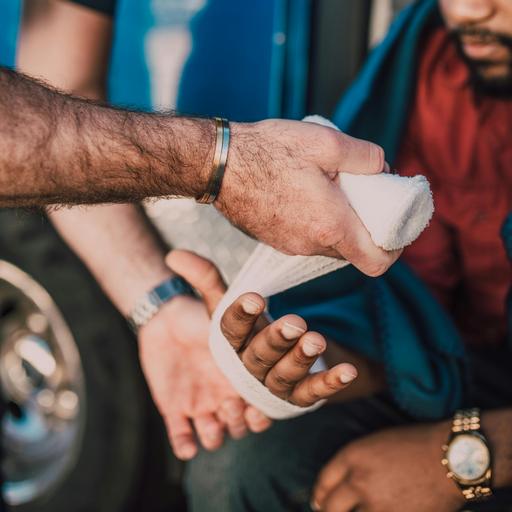A Closer Look at Men's Eating Habits

When we think of body positivity and body dysmorphia, we often focus on how that impacts women. However, according to the National Eating Disorder Association (NEDA), about one in three people struggling with an eating disorder is male. Yet even the research on how eating disorders impact men is not in-depth, the conversation on eating disorders and body image has historically focused on White women and girls.
An estimated 10 million boys and men in the United States will experience an eating disorder. However, these are only the numbers reported due to medical diagnosis and do not account for those who have yet to seek medical care.
Body dysmorphia due to social media is often shown to impact women and girls, but men are also affected. Body dysmorphia is defined as the obsessive focus on perceived defects in one’s body. Regardless of the changes, someone makes, they mentally only see the perceived “defects” in the mirror. Videos and images of male bodybuilders on social media and even the fantasy of superheroes have been linked to the increase of eating disorders in men.
Men, especially athletes, are more prone to develop an eating disorder known as Binge eating. This is where someone consumes a large amount of food in one setting that develops into an uncontrollable impulse only to consume food at one time. Binge eating is normalized when playing sports that involve bulking up, leanness, or weight classes, such as wrestling or powerlifting.
This has led studies to expand the definition of eating disorders, resulting in “subclinical eating disorders” that are more prevalent among men. According to research, “patients who are not in treatment for an eating disorder do not show all clinical aspects of anorexia or bulimia as described in the DSM. Nonetheless, individuals considered to have subclinical eating disorders demonstrate patterns of disturbance in body image and self-perception that are pathological. (Am J Psychiatry. 2001)”
One study looked at male lightweight rowers and wrestlers and found that 52% engaged in binge eating while 11% were in the subclinical eating disorders. So that means over 60% of athletes were navigating an eating disorder.
Eating disorders are a rapidly growing problem among male athletes, and without addressing the social narratives that hinder proper diagnosis, we are missing the mark with good male health. Two of the main issues that impede adequate diagnosis are:
- Eating disorders are categorized as feminine, and males feel they will be considered “feminine” for seeking resources.
- Resources as assessments often have language geared towards women and girls.
Understanding eating disorders are not gender-specific; anyone can develop an unhealthy eating habit that can lead to an eating disorder. Even as an athlete, it is crucial to prioritize your health over the sport or job, which may push past society’s regular narratives. Coaches and recruiters also need to be aware of the signs of eating disorders and bring up the proper resources.
Eating Disorderslook like this:
- Excessive exercise patterns (exercise every day, even in inclement weather).
- They avoid social settings with food.
- They are hiding food in their room.
- Constantly commenting or preoccupied with their weight.
- The rapid change in weight (both loss and gain)
Finding a healthcare provider to properly diagnose you are a step toward forming healthy eating habits. Men being kept out of the conversation is harmful to their health and continues to stigmatize eating disorders. We must encourage men, especially those who are athletes, to put their health first, which will allow for a higher quality of life.
Site content is provided for informational purposes only and is not intended to be a substitute for professional medical advice, diagnosis, or treatment.


